Porsche Cayenne is a major entrant in one of the most popular classes of upmarket vehicles in Australia, that of high-performance SUVs.
However, there’s a major difference between the Cayenne and the other Germans, Audi, BMW and Merc, and the British Range Rovers - the Porsche was designed from the ground up as a performance machine. The others began their lives as standard SUVs and were hotted up later.
Styling
Porsche Cayenne has been around since 2003, yet the overall shape doesn’t look all that different today, a smart move as the Porsche 911 has made its name by sticking to the same shape for decades.
For 2015 Cayenne received a facelift, not only in appearance but also to improve aerodynamics. While the shape of the front is instantly recognisable every visible part ahead of the windscreen has been altered. The stylists have given in a stronger visual stance by putting an emphasis on the horizontal lines of the front grilles. Note also that the shut lines between the bonnet and guards is higher than before.

The tailgate is all-new, again to give it greater visual width. The four exhaust outlets now run through the rear bumper.
Cayenne’s complete cabin is beautifully finished. But we find the huge array of buttons on the centre console to be rather overpowering in appearance. The 911 we swapped for the Cayenne at the end of our week’s review carries out almost the same functions, but is much simpler visually.
Having said that, beauty is in the eye of the beholder so make a trip to your favourite Porsche dealer to see what you think.
Engines/Transmissions
The Cayenne diesel we reviewed had a revised version of the 3.0-litre V6 turbo-diesel we have admired in the past. It now puts out 193 kW and 580 Nm and, importantly, meets the very stringent Euro 6 emission regulations.
A conventional eight-speed automatic transmission is used, not the sporting PDK double-clutch as in other Porsches. That’s because some Cayennes are used to tow substantial loads (up to 3500 kg), double-clutch units aren’t at their best in that sort of environment. However, it seems a shame that the great majority of drivers who don’t intend to drag big loads behind miss out on a PDK.
Infortainment
The central screen has high quality and is of a reasonable size. It offers satellite navigation that can be used in 2D or 3D and provides the speed limit for roads covered within the navigation database – something that’s always handy in a Porsche.
Digital radio backs up the standard AM/FM reception and the system automatically switches between digital and analogue of the selected channel when DAB suddenly goes quiet.
Data can be transferred to the Porsche Communicant Management (PCM) system via Apple or Android smartphone.
Safety
Safety is about avoiding a crash – not having one at the slowest possible speed as our governments would have you believe.
With plenty of engine torque, huge brakes, excellent suspension backed up by Porsche’s Stability Management’s electronic systems and the appeal of the Cayenne to those who care about driving correctly, who needs to toss one into a concrete block in Sydney to prove its worth?
Driving
There have to be compromises in any SUV. The biggest problem is that the Cayenne's engine and transmission are so fast that you somehow get the feeling the body should be equally sporty. Throw it at corners and you’re soon reminded that this is a high riding SUV, not a low slung Carrera 4.
However, it hangs on at high cornering speeds, is reasonably happy to change direction mid corner and only gives the impression you might get into trouble if you drive it at silly speeds. The electronic systems will then do their best to sort out the problem.
This is a sports SUV, which is the sort of vehicle many drivers are looking for – a sportscar it’s not.

Ride comfort is good for its type and tyre noise is generally under control, though Aussie coarse-chip can increase the volume at times.
Cayenne V6 turbo-diesel probably provides sufficient performance for anyone other than the full-on revheads. It answers willingly to the ‘throttle’ with minimal lag and once you get all that torque up and running it flies up hills and overtakes with big reserves of safety.
The torque-convertor automatic has sharp changes and changes down a gear or two very promptly. Porsche tells us it has been revised to give the sharp feel of a PDK double-clutch. It’s not quite as quick to our way of thinking, but comes reasonably close.
The front seats are nicely supportive and have just the right amount of bolster grip for an SUV in this class. The back seat has good legroom, width and height for two, three without too much of a squeeze.
Model Range
3.0 Diesel: $106,100 (automatic)
3.6: $107,600 (automatic)
3.0 S Hybrid: $140,800 (automatic)
3.6 S: $141,200 (automatic)
4.2 S Diesel: $144,400 (automatic)
3.6 GTS: $154,200 (automatic)
4.8 Turbo: $232,900 (automatic)
4.8 Turbo S: $232,900 (automatic)
Note: These prices do not include dealer or government charges. Contact your local Porsche dealer for driveaway prices
Porsche Cayenne 2015: Gts
| Engine Type | Turbo V6, 3.6L |
|---|---|
| Fuel Type | Premium Unleaded Petrol |
| Fuel Efficiency | 10.0L/100km (combined) |
| Seating | 5 |
| Price From | $61,490 - $70,620 |
Verdict
Having spent a great week in a Porsche Cayenne we can certainly understand the attraction to owning a practical SUV that’s been designed and built by people who have a deep understanding of what sporty motorists demand.
Pricing Guides









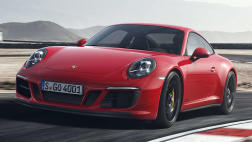
.jpg)






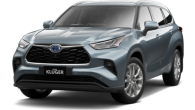



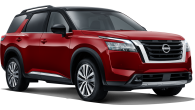




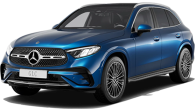







.png)
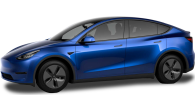
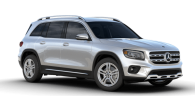
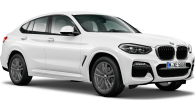



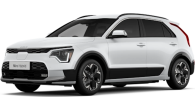

.jpg)
.jpg)



.jpg)